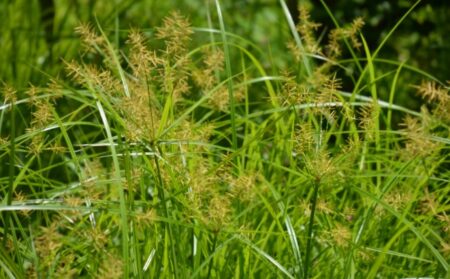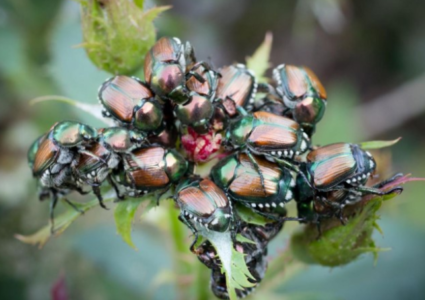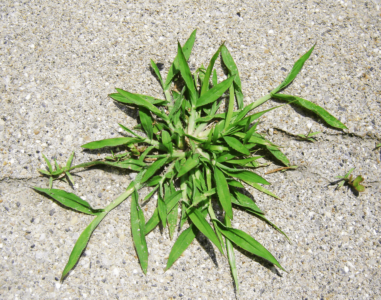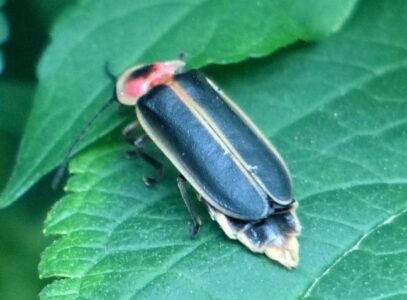SCAPEMAIL
VOLUME 9, ISSUE 13 July 1, 2025
IN THIS ISSUE:
-
Chinch Bugs & Beetles
-
Nutsedge & Crabgrass
-
Renewal & Remembrance
July is a vibrant month in the landscape—flowers are in full bloom, lawns are green and lush, and the long days offer the perfect opportunity to enjoy your property with family and friends not only during the beautiful days, but also well into the evening hours.
Summer is also a time that your turfgrass needs a little extra attention to stay healthy and vigorous. Today we’re focusing on a few of the problems you might encounter, specifically chinch bugs and crabgrass. These can quickly cause damage to otherwise healthy turf if left unchecked.
If you notice any unusual damage or suspect a pest problem, let us know – we’re happy to assess and recommend the best treatment options.
Have a happy and safe holiday weekend! -Shayne
Chinch Bugs and Japanese Beetles
Chinch Bug Lifecycle
Lawns affected by chinch bugs can cause big problems. They are most active now – during the hot and dry months of summer. This is especially worrisome because heat and/or drought can already stress your lawn resulting in double trouble.
Chinch bugs feed by sucking the sap from grass blades while also injecting a toxin that blocks water movement in the plant. This causes the grass to wilt and die leaving behind irregular brown patches in the turf. These areas often resemble drought stress but will not improve with regular watering. You can easily check for active bugs by parting the grass and looking for them at the soil level, especially in sunny areas.
Prevention and control can be achieved by keeping your lawn healthy so it can better resist pests. Tips include:
· Proper mowing schedule and blade height for the season,
· Proper watering techniques,
· Over-fertilization adds too much nitrogen which can attract them,
· Monitoring the turf with regular inspections for active bugs.
Japanese beetles are a common summer pest that can wreak havoc on lawns, gardens, and ornamental plants. These shiny, metallic-green beetles with copper-colored wings typically emerge in late June and remain active through August. While they may look small and harmless, their appetite is large and destructive.
Adult beetles feed on the foliage, flowers, and fruit of over three hundred plant species, skeletonizing leaves and leaving behind a lacy, scorched appearance. Roses, grapes, and birch are among their favorite targets. Meanwhile, their larvae—known as grubs—live underground and feed on grassroots, causing brown patches and weakened turf.
Hand-picking beetles in the early morning and dropping them into soapy water is a simple and chemical-free method to remove them from your plants. Neem oil, a natural insecticide, can deter feeding when sprayed on affected plants. Milky spore and beneficial nematodes are excellent biological treatments for controlling grubs in the soil. Let us know if you would like additional information on these methods.
Encouraging natural enemies like birds, frogs, and predatory insects can also help maintain balance in your landscape. With a little vigilance and care, you can protect your garden from Japanese beetles while keeping your landscape healthy and sustainable.
“Then followed that beautiful season…Summer. Filled was the air with a dreamy and magical light; and the landscape lay as if new-created in all the freshness of childhood.”
Henry Wadswoth Longfellow
Nutsedge & Crabgrass
 Nutsedge is a very aggressive and persistent grass-like weed.
Nutsedge is a very aggressive and persistent grass-like weed.
Nutsedge is a fast-spreading weed that can be a major nuisance in lawns. Often mistaken for grass, it stands out due to its triangular stem, glossy leaves, and rapid vertical growth. There are two main types commonly found in lawns: yellow nutsedge and purple nutsedge. Both thrive in moist, poorly drained soils but can also invade well-maintained turf if given the opportunity. Early detection and consistent lawn maintenance is key to keeping nutsedge at bay.
Effective control of nutsedge starts with proper lawn care practices as mentioned above. Improving drainage, avoiding overwatering, loosening compacted soil, and maintaining a dense, healthy turf will also help reduce its spread. Hand-pulling can be effective for small infestations, but it is important to remove the entire plant, including the underground tubers, to prevent regrowth. A proper layer of mulch can suppress nutsedge in garden beds.
For larger infestations, selective herbicides labeled for nutsedge control are often necessary. These are applied when the nutsedge is actively growing, typically in late spring through summer. Multiple applications may be needed for complete control. Solarization, involving moist soil and plastic covering during the hot months, works well to kill the tubers with heat.
Crabgrass is an unwelcome summer guest and, as seen above, will thrive in the tiniest of spaces. As temperatures rise, so does the presence of one of our most persistent lawn invaders. This annual weed thrives in hot, dry conditions and can quickly take over thin or bare patches in your lawn. With its low-growing, sprawling habit and coarse texture, crabgrass not only disrupts the uniform look of turfgrass but also competes aggressively for water and nutrients.
Crabgrass germinates when soil temperatures reach about 55°F for several consecutive days, often in late spring. Once established, it spreads rapidly, producing thousands of seeds that lie dormant until the next growing season. Because of this, prevention is key. Once again, a healthy, dense lawn is your best defense—thick turf shades the soil, making it harder for any crabgrass seeds to germinate.
For those already battling an infestation, post-emergent herbicides can help, but timing is critical. These treatments are most effective when the weed is young and actively growing. Cultural practices like mowing at the proper height, watering deeply but infrequently, and overseeding in the fall can also help crowd out crabgrass over time.
Fireflies!
Did you know that fireflies are not bugs or flies – they are beetles? Did you also know that the males are the ones flying? Females typically stay on the ground or on low vegetation to reply to the flying and flashing males. Connecticut has around twenty species of fireflies throughout the state but the three below are the most notable.
The common Eastern Firefly or Big Dipper Firefly (above) is the most widespread and recognizable firefly in Connecticut. Males are known for their distinctive “J-shaped” flight pattern, which gives them the nickname “big dipper.” They emit a yellow-green flash in a rhythmic pattern to attract females. These fireflies are often seen in fields and backyards during warm summer evenings.
Photuris fireflies are oftentimes called “femme fatale” fireflies because the females mimic the flash patterns of other species to lure in unsuspecting males—only to eat them. These fireflies are larger and have a more erratic flash pattern. They are typically found in moist, wooded areas or near water sources.
Less commonly seen but still present in Connecticut, Pyractomena fireflies tend to flash earlier in the evening and often emit an amber-colored light. They are usually found in marshy or wetland habitats and are more active in early summer. Their glow is subtler, making them a bit harder to spot unless you’re in the right environment.
If you’re interested in learning more about firefly conservation and research, please visit Firefly.org.
Renewal & Remembrance 2025
 In 2024, YardScapes worked at the American Veterans Disabled for Life Memorial.
In 2024, YardScapes worked at the American Veterans Disabled for Life Memorial.
Each July, the National Association of Landscape Professionals (NALP) hosts an annual service project at Arlington National Cemetery in partnership with the National Parks Service (NPS). NALP member companies are invited to participate by sending volunteers to Washington, DC for a day to honor those how gave their lives for our country’s freedom by donating their time, skills, and expertise to make improvements at Arlington National Cemetery. The day also includes another site in need of assistance as specified by the NPS.
During the event, volunteers perform services including, but not limited to, applying lime, cultivating soil, adding lightning protection to historic trees, spreading mulch, planting flowers and installing trees, upgrading irrigation, and various hardscape projects.
Last year, YardScapes’ team, along with other volunteer companies, installed over 13,000 plants at the American Veterans Disabled for Life Memorial during the 28th annual event.
This July, along with Arlington National Cemetery, volunteers will also work at the expansive and impressive memorial to Franklin Delano Roosevelt located on the southwest side of the Tidal Basin. This monument has four outdoor rooms, each one representing each term FDR served. Look for updates in our next newsletter!








